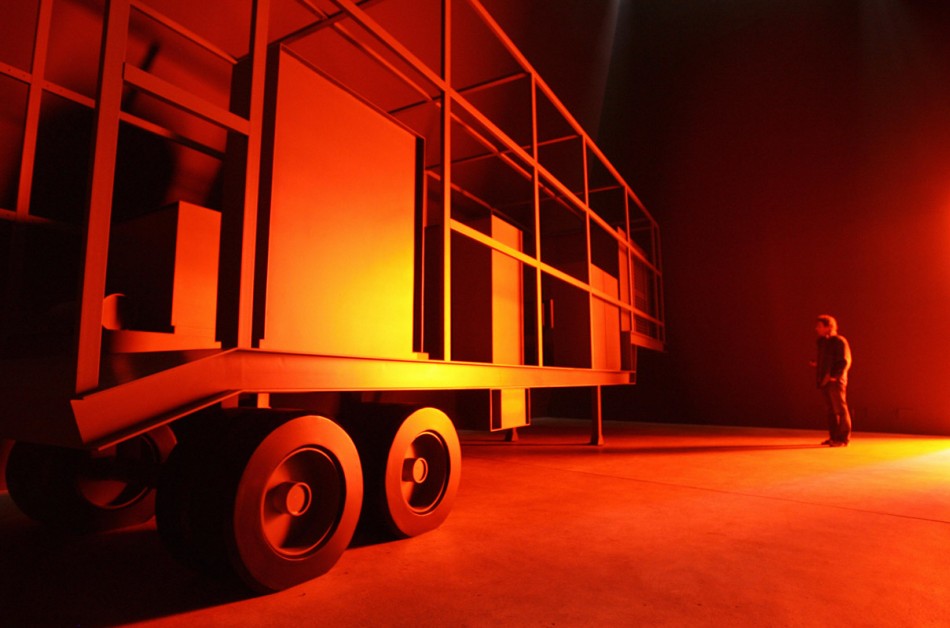
Taking Truthiness Seriously (Really), at SITE Santa Fe
Truthiness—Stephen Colbert’s clever coinage- holds that our culture lives not according to fact but according to one’s feelings or going with your “gut.” He suggests reality teeters on the delusional while the Truth (capitalized) fails to uphold omniscient integrity, falling into an arbitrary condition. Ladies and Gentlemen, we have entered the Age of Truthiness and Site Santa Fe’s new exhibition, More Real? Art in the Age of Truthiness, suggests that we can giggle all we want but maybe we should start taking the facts seriously. Here are a few pieces, culled out of a very big show, to think about.

Ai Weiwei’s contribution, Colored Vases, presents nine vessels offered up as Neolithic artifacts. That’s all great and groovy but the artist took the liberty of drenching each one in industrial Japanese household paint. Now they look like a collection of drip-dried pastel M&Ms with hints of archeology squinting through in the places where Weiwei was kind enough to leave some of the original object’s integrity. They rest on a pedestal with a glass cover separating them from us as if our very gaze would cause further degradation. By displaying them with such truthfulness, Weiwei raises their status to preserved artifacts. Otherwise their encasement is a haughty presumption by the artist that even after his colorful additions these objects require preservation, perhaps even more so. For the viewer, Colored Vases triggers our sense of honor, and even loyalty. If it is a fact that Weiwei’s vessels are from the Neolithic period, perhaps we take his work a little more seriously than if he were churning out “enhanced modern fakes.” So the question becomes: Does truthiness make us care more about the facts?

Right next to Weiwei’s piece, you’ll find a little plexi box also preserving something “sacred” within its transparent cell. Entitled Men are the New Women, Dario Robleto questions something foundational to our cultural narrative. Inside the fifteen-inch box is a female ribcage bone, ground to dust, recast and carved into a male ribcage bone. The effect looks like a real relic, stained with resin, dirt and pigment to appear mammalian and carnal. It rests within the box on a plexi stand, hovering above a baby pink bottom that invokes newborn babies or breast cancer awareness. The title is engraved into the top of the box like a halo that eerily projects below onto the wall or edge of the box. Here lies the burden of man and an actualization of one of mankind’s most seminal myths. Is Genesis fact or fiction? Men are the New Women prompts the viewer to question his/her belief and with the “facts” looking so “obvious,” perhaps decide if the truthiness really matters.

Lastly, Iñigo Manglano-Ovalle puts one of America’s more recent and outstanding acts of truthiness right in front of our eyes. Phantom Truck takes up a whole room, darkened with only a trace of light that reveals the end of a truck. We see large industrial squares that feel foreign to our flesh and blood. The dark room is mildly scary and as eyes adjust and containers appear, enormous and heavy, the viewer remembers that time when Americans were serious victims of truthiness. Worse than Weiwei’s nudge at cultural identity, Phantom Truck forces an emotion with every inch of its immense being. Here they are, the mysterious weapons of mass destruction made manifest before our very eyes and how do we feel about seeing them over a decade after the fact? Surely even Stephen Colbert would agree that truthiness is all fun and giggles until someone (or something) gets hurt.
